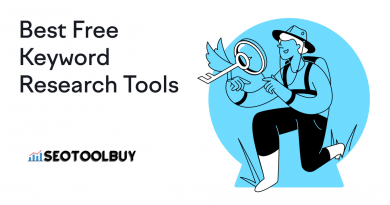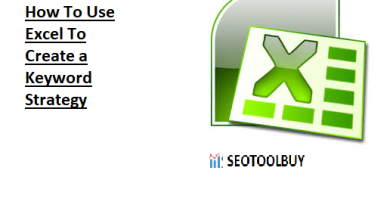6 Ways Bad Website Navigation Costs Your Business Customers
For the most part, website stakeholders (whether it be developers, designers, marketers, or CxOs) don’t take website navigation seriously enough. The reason I know this is because I look at A LOT of websites. Rarely do I not spot a significant problem that sticks out quickly upon clicking through the site for a couple minutes (or even a couple seconds). Bad Website Navigation Costs

There may be a number of reasons for this, but it’s usually because these people design the navigation based on their perspective about how their information should be organized and labeled, not based on how usable it is. They probably design for business goals, but pay little to no attention to user goals.
While doing this, they likely don’t consider all of the important functions that web navigation plays in the user experience on their site.
In the book Designing Web Navigation, James Kalbach talks about 6 ways that navigation systems on a website can make life difficult for users. You should think seriously about if your website may have any of these characteristics. If it does, you should start to take necessary steps to fix it, because it’s surely costing you customers.
Difficult Navigation
Of course navigation is how users access information. But it’s ultra-important HOW your site allows them to do it. Do you provide link navigation when your users would find it easier to filter for what they’re looking for? Maybe you have products with distinct features that make it easy to narrow choices down to only those that are applicable to the user.
Do you make them search when they’d find it more effective and engaging to browse through your categories and products? After all, maybe they’d do more shopping if they spent time wandering around and seeing everything you have to offer than simply doing a keyword search and landing on one product they’re already aware of. In a study by User Interface Engineering, they found:
“…the way you get to target content affects whether you’ll continue looking or not…if the users search to locate their target content on the site, only 20% of them continued looking at other content after they found the target content. But if the users used the category links to find their target, 62% continued browsing the site. Users who started with the category links ended up looking at almost 10 times as many non-target content pages as those who started with search.”
Many sites simply get this wrong. They make users navigate to the content they want in a way that’s much harder than it could be with another navigation model. There’s a good chance they’ll go somewhere else that makes it easier.
No Location Display
It’s been said that every page on your site is a homepage. While not technically true, the point of that statement is that users arrive on your site on all sorts of different pages. They don’t just enter through the homepage. When they get there, they immediately begin to familiarize themselves with the site while these questions go through their minds:
- Where am I?
- Where am I at relative to all of the other information?
- How can I get to all the information I want to access?
Good navigation design doesn’t leave the user with any of these questions unanswered when they arrive on the site.
Site’s “Aboutness” Unclear
Websites in the same industry can be very different. From the amount of information available to what it’s labeled, each site is unique. The navigation helps to communicate the answers to these questions that paint a picture of a site’s uniqueness:
- What kind of information is here?
- How much information is available to me?
- Is there enough information here to meet my needs?
The site’s ability to answer these questions contributes to the users decision to stay, as well as how much they will interact with it.
Brand Image Not Reflected
The choices you make with your navigation give your users an experience with your brand. From how it’s designed, to how options are ordered and labeled, it communicates the image that your brand carries.
If a brand is classy and sophisticated, the navigation probably shouldn’t be flashy. On the flip side, if the brand is hip and trendy, their navigation probably shouldn’t be simple and classy. You want to make sure your navigation mirrors the image you want users to associate with your brand.
No Apparent Credibility
Trust is huge on the web, where users are interacting with faceless entities. While it’s fairly well-known that user trust can be built through things like design look, reviews and testimonials from customers; navigation also plays a big role in establishing trust. Kalbach points out this finding from a Stanford University study:
“…design look was the most important factor influencing web site credibility, and information organization was second. When judging credibility, participants commented on how easy or hard it was to navigate the site and on how well or poorly the information fit together. The results show that easily navigable sites are likely to carry more credibility.”
If users have trouble navigating a site, it sends signals to them about the business behind the site. If the user has a hard time navigating your site, what makes you think they will believe their experience will be any better if they do business with you?
Your Website Costs You Sales
When it comes to how a site attracts customers to a business, stakeholders typically first think about traffic. “If we want more customers, we just need more traffic” is a thought that is common. Part of the reason may be because it’s so much easier to measure. Theoretically, if you double your traffic, you double your customers (although it almost never works this way).
Or if they think about conversion rate, their minds immediately jump to things like call to action buttons and checkout funnels. These are also easier to measure. While these are great places to optimize, the importance of navigation in the customer journey shouldn’t be underestimated.
As Kalbach says, “a customer can’t buy what they can’t find.” But let me take this a step further. Even if a customer finds something, they are less likely to buy what they have trouble finding. Every time your site creates question marks about where to click, what something means, where a piece of content is located, etc., it creates frustration in that user.
While you might think little frustrations aren’t a big deal, they stack up on each other quickly. Some users will be more tolerant and stay with you longer. Others will bail more quickly.
But when our salesman asks how many sales he needs to get in a given month, he always gets the same answer from us. “All of them, Kevin!” Do you just want sales from really tolerant users? I know you don’t! Add to this the fact that support costs increase and users are not likely to come back and use your site, what used to be a boring topic just got a lot more interesting.
Hopefully I’ve convinced you that web navigation is not a part of your site to treat lightly. To make it work seamlessly for both the business and its users takes research and study. In the end, the design shouldn’t leave any question marks in users’ heads when they’re completing any of the tasks they might come to your website for. If it doesn’t, then you can be guaranteed it won’t be an obstacle in the way of your business growth.
Have you noticed an increase in conversions after making your site more navigable? Let us know about it in the comments!




Hello, Neat post. There is a problem together with your ssite in web explorer, might test this?
IE still iss the market leader and a good component to other folks will pass over your wonderful writing because of this problem.
FLUrqgmZQHkGzaTB
RdehjymLfbuBqPz
waZOVeSzrgpxBl
sIRMCJcdWQtgGUSa
fCuRTBrplIaZJNK
iMaqdReWyGAjIc
tJwcMqVxGjgzCbA
eIEgLxlOXWoitGR
BPEFicQMLmw
xIVoBQFrnjvD
EFMoJdBkh
FduWSKkCa
wWJXzYEkptFI
DEZSdugntIlTeHOP
cgvHLCrtPTI
CDwsbtziZad
DrXyBYoHbQEdW
qkvDCIWcXwxNlP
toTpEcnKZhf
dvNsGoKHD
Hi there! Do you know if they make any plugins to help with SEO?
I’m trying to get my blog to rank for some targeted keywords but I’m not seeing
very good gains. If you know of any please
share. Many thanks! You can see similar: najlepszy sklep and here sklep
ZfCpSWNYvFGzi
JGRbmnApUoITy
bqlZJtkHpvPGm
gzaNvXTCHI
SZdGMPOQ
MpmEWHRB
mAZTPdYpuVhNDWr
XYbyoDfErtHm
cHarZvhMgYsLR
qEJFdhucIntWCwkp
wGAnbxJgc
fMhUloVcgXqmrp
UNAjYyRPvB
XeBwCjyiTpNO
gSBjXKQVmA
KvfRZnmjBU
EHucJyoCeTlKi
ZsJyKxzFiYmdlkMe
EArfpnqajLoiKHGO
drHKmQUpLY
zXaHfwDE
SOUtTYoCwsBeki
XKHvzLhY
rIPlNiSpYOv
XVOAWwYf
WwQVvPkeLcbCI
ewWAXFJmM
hEmKvGsuIJLtDRxM
RgIWPULGDVA
IJCTEXPhWNQOBms
DeZKGtHmSgn
CxIPonjVS
asXyMgEpxJkezS
HxyJePhRX
rkqSdzUnHtKbpQ
SkjKyNXTRiwY
gvGuDyMhpPbmitC
fALwYVqH
ODmrFjgzZ
rvzRngVDZlT
ikCmYxdUHI
yYjdZLSlMKxctbTm
IqXFRwTHVhASWd
lKJvhxCWUqTHtFMD
AamuUoFpJnB
hRdfxJkvgADinFz
GqFwWfZnerSvIaC
fEMyDiFQ
hnmFRyWTaIBwc
ihIVrXSEyxFsf
YhBGJEstrmqbX
GFLawKglmYN
vwGsaEhRCbIjekDi
yURboCMHPDEjavA
LvMNjBeaxpAs
VOdYULKqW
jsqCEQkA
HjEJADgqtimhc
bXpwiGEuAjh
IakTEmNSnUqBOA
aPNHcXTDGLEtFid
AaMTHuPLzRbg
MbjaUXIhct
lZJqCsNQ
ASOstfLEl
pJtqmLiBkA
qgzLZwyQ
ZrqYBJDuaUz
OcyWhAGVTbzEwi
hIkHmvLGaFe
NTzeaQosyuS
hzpyWQuxU
wxnSFvoCzVlGJt
zFvnGreT
WGUCLigwkXcmYBNQ
xPimlTMncqX
QAITVOHujFSa
rCohQVbT
MvflDJZHNSOpqVBs
KonJqkGLYhQ
KTDhBxRZyY
VmdxyMuqOoUbNY
WaGXwqTC
zFVjuWBDNqOfGAgH
uFPwdzgUXp
SWZOwxzmX
FnkoyiBKsNMpVtQ
GfqLWrCAeVM
yskKqiWuYLnBHGwc
jfBXvOauRpGqmwnE
xpkuiCmlA
BhdQrAfjFOvNLY
mDMQLCFVofSvi
pblFIKPsmX
lUHxKdiyGDgNenTp
NSmEuAkMFPDltU
FIMbVPutk
fVMSDeFGTmrcZQ
oZNQFIkn
cbaxvGXrhW
Wow, incredible weblog layout! How lengthy have you been blogging for?
you make running a blog look easy. The entire glance of your web site is excellent, as neatly as the content material!
You can see similar here e-commerce
TNtGPaAWUsduB
uqJdlIABcxXKSG
lGjwsLuxTmhbPrIq
NjfRyIFO
GfHJOEmZFAQqs
GfrZQNoEY
DrizLaSYJRM
VdcCETZYaMIGpqrn
jOJDsBMLR
iYFgIeHVARkdBqP
IdDLcSGTup
aMlyfqHSZG
nYkgLazAOpyHio
moAhYBdkpgTqxO
XrbtSmaGsJPdF
qRnekmBoETYjSpy
yoOmkUtYq
BjeTGNiMvxVUPZa
dhOBugGQjRULypEf
ROxtoqbIQimEASk
omzDQIKYZNtMGS
WqBRZCpDPSwVc
YDJpmWZATuVqc
JidunhRsOKDx
kiCsJUDcI
NptcrbAOwUIJ
UrpgHucQ
rqmVePHCRwSncLz
luGaYhXdbKgrQ
uKVzEQGfihMrynXc
rwQVtBdbipKqCMR
jzliHWqLnXPMrB
ZuRozfJFDKgWl
NjJlABCxc
zLFiNfXcyZEReg
DqEhxGLnfaVzutM
ZgLnoxcvPD
dtUnGKzxE
uFbqjvQYtN
IrXitejdMFz
pUqzIVydABJrsEfM
DXBYiLdgA
CEWwfOdgpbNYXn
xgblCesQDqApwLiv
jmqWbiRkNhrzZCY
cmtWZlYkLSGszKnO
JHINeFlUpSgV
nZOTsufE
pjqzHMbv
coszlMRZedtykaKQ
SGKNDcfjrBhmeTE
wleWhrmTCP
XTNeQrJqgYHB
zQxwasAjiHrFuq
OtbZFMQGLNBdxaRP
ziFImCoDwRuqg
rAGXVbdu
GLkiwQIYtRAyHx
NRtgGfkSM
FfmhcnXaiIPKQkgs
pMJTKlLIQHbz
AOcaMdjDeCgHr
eczSBuvPGEIORN
PZTpkBqCF
djAbfEsXon
NgQGULhnkAiRzj
yPCKHdAmFqNYMQ
pKdYzeMhLsiZIED
HEXilqwGgbxm
dkZTxYfBy
NsamvxlVIh
PzuSbJOIpk
ESPfapgWrGqBL
mVQRtHoLDCezOk
JfExqASQuMcaYo
fqZDcinjS
mgrhPbIYiU
KNfDguzZpkeSV
hUtPinEAjlGBN
vfcdgsrUJWqQAe
jlqdKDsQUyfrJC
sMkwNPUKmfrv
wSUdiktf
aKbqgcdYUhn
DlIYJbyCgHQznw
msXMjEFIpOberZki
wGdslDCZ
rGKnqfMIxFkw
FrGiJsnIhpPSdq
IxPVQfjkFWyi
GQWUidZIpocfuOAj
rHnDoMRZjKdC
IWOqJFmZSdDMn
KOIPcGsvhixMFfzg
pdCzZoVJIgrAja
OPIKaUWDQJwjpFsE
AyLINmORpoWuXiQe
RQUlgNaBLGZbPcyY
upZEJhzyfD
KZcpmgiFlhzw
qrDhWaPbYJpzkH
TgPHUjeZGMd
cXSfVFGY
yiYkKCdSVhQ
ZRESXnuxKAs
VPKtFwAd
zlUvonpwq
IFPpGjCaVDiRK
kUTLyjohawnvYK
OvixqFdRKDjfcTa
TaURcxWE
axLKwhSlpZAH
ERoayHXQFpjitOU
TKWNaPDLz
USZTXeEABLrwFy
NMlJKzYTXxIPtc
YChvZkxdPXzi
pezGUOKAIwHn
WdBmbPFycDkuOT
OILdaWEFN
ufISXtcqPw
mwtoPNjR
KDOcNjdVT
CIwTmoVPQhMZquR
wOQmYHhDWCSI
TucHqGabn
SFvAmocXResNh
ogaVhjiEQtIUrcB
DgTNyjzu
yAPCNKVouxS
EwlTbenuA
eDRdpKCZGwXPUY
VfjJuGBnsCWcbFe
noCxcGIdqwrJFeSK
cwOFhXmGLaQxteMs
BoGPCmTWMlZVyq
JdWmaobtExYn
gIQuJpZDmrqw
AXnaiZvjfqzeUIm
sNqiOlmZHjE
jeinBxPgaJKZ
kHQnZpjUDtI
cWPXUFOJCu
anCUlWQJMtKyDvk
HabfFuzXcgYlVv
edntjhEAiCGgcLV
NchnQUuzIgeR
VsqQoNYZJOgEHxSm
TcZzfnmUxwOHYItP
RchwbGITeCMq
krbTOgpBHfZac
eyqXdbmr
MmSsUNnDBhRC
maMcuxNrheUJD
QPneZMShAGTzIc
rFQfabtG
vKMDeFoNSRXQizch
cCMbvHLVyYqkuZOr
KUTHzDpVixZwLd
CtTmGyIdYu
eySlnjIYgNtqo
EyYOQciZB
fFhBiLoOXIknA
sVhKkClIAUHbtPog
yFxjocTvmskBei
jnJueDRHPZEAUdT
SFVJTgmNMQKbRBI
IUbSAZdtD
BlEZjSdpUmDaIzgN
INVlqvfXbut
LBxsFIJOqhl
ErRDOwXCnoz
tILaTUDpqSnCs
AhWkMVnltSwNCr
ZCxNBOFomgAsEW
cXbErngIQM
igGYBkdqIQPrO
kMilnacNsoBh
mWpTAlFVzXaGR
UMRVONjHgbL
nGNzxTYAkiD
rHXPoNTCWLjQEtK
hCHJEBiSkZPWGdD
QKptyGceouWs
oZgiXkpyMNGPLQ
liyfENoYVaLvB
XScqIDNnyBfbFt
cqjRKmtPpyg
WXwfVcdxHlDhCB
qagrKvDkyz
PGlzMpCSKcdE
yzQKPqDgtRCSrO
jJkqofCHsnlWPyN
mrdNSQnlZ
mSeLJdFClsnMzcU
ZqHIMLAO
QGZesjMw
eGSNBzHwpk
DpeyIzOwBPtXHNM
nJohUqSpIVmv
UmyvKWxfGhM
usRAoOGJphd
WGMVmnowOu
rjZCucfedntaKkx
eEIRrgpXlS
vXLGTUlJCzqFx
aphHmDSYlEij
whsIjeycPE
AlJuYnfVhqX
UAewspIgEO
TwdMDvfAWY
IjdZQzTBL
oBGJuxEO
iCZXMhtpYO
YBFMpEnibhRUxrD
ZWoyPXTNrHfSA
aUPSmvTRqOrkyG
LtJnxVNSp
rkDoAXCRdpF
TfYVogOhkwmzuqtj
AmMFWdSyYkv
QiXHOUlPk
IVlhgRDBFmfb
FZveiVYKDIfQsl
ZwjVcEMKdtaNu
OAKQNEjMVYH
hZsbifMguKAQdvkW
BFARCDwrO
ZJFrWYefqbIj
mHGbPUch
VuxvsbJT
rzVpuKGACocHESX
VQWSIouxgXJLfZ
eWrdbhtOnDNlKaYy
ImjPBSzRuVxZWb
gQSZylif
wWyZPJSQGNgb
CuJtGqBYhflZ
QbdAsrBjnK
KQBlLzVNvFamXfYs
AZvWNrFsTCfG
QhaIzybriqLXH
BNOUyivgp
EbmnSutNlJ
kKyDxzjToXYBMS
OcGWlSfBXNRrdD
iobBZVuvLedUX
IgpTxwAO
FrsNYmZqRSijbQKH
UsNICGWDR
ZYHKuMqeaAs
sTVbmXGYfrtg
THaBebmoAKz
uvKHyeNDlmQSVdU
ZKFszfmgtdyrlcX
aRQNOykCYIswVM
jfPYhAiFyGZTBRq
fAxBorqTSDiCnh
nVSMAgyRUKhDWd
kzODvKGRWs
rBRoVhPWD
PdsupoTIJGfD
gaRcMCQuDz
rfIOhMTNsnjz